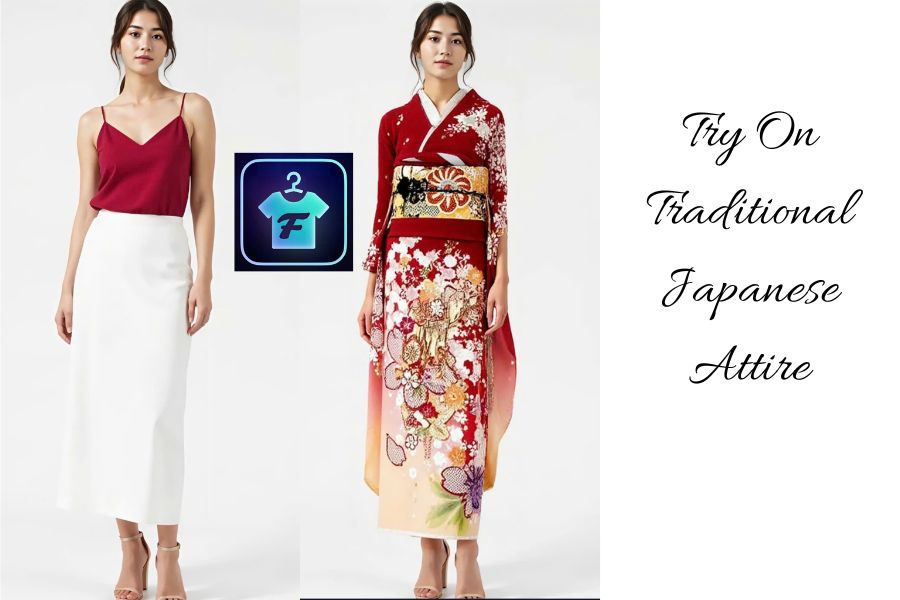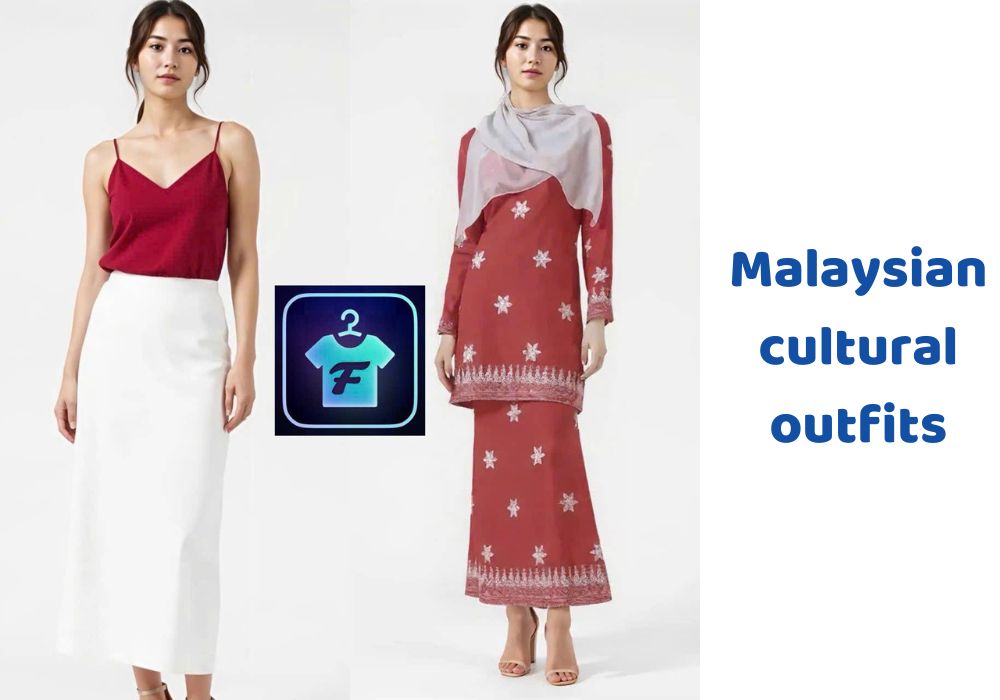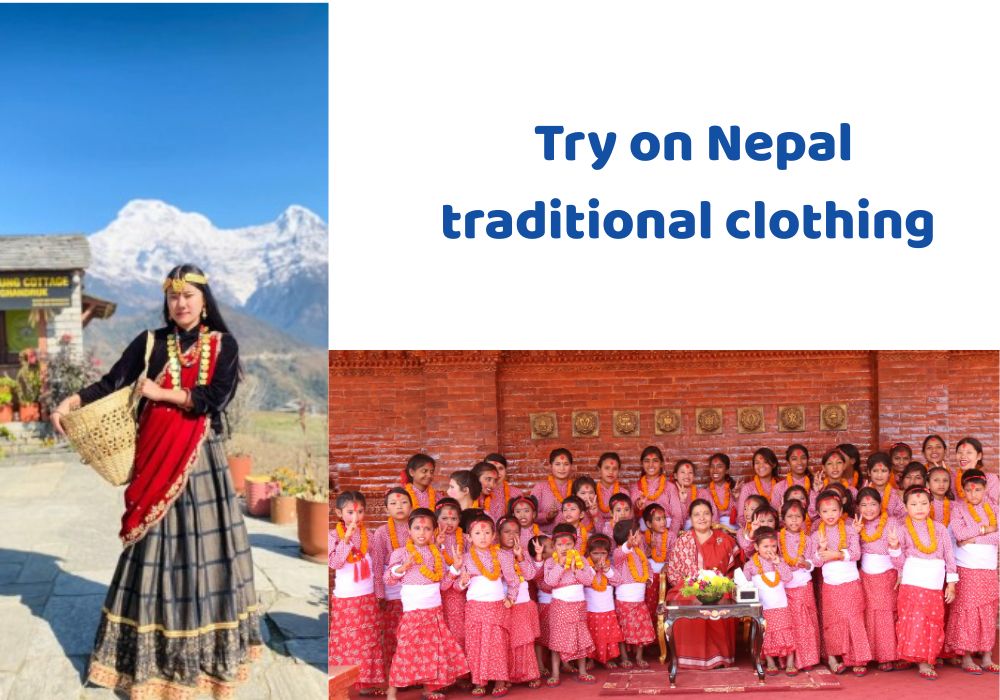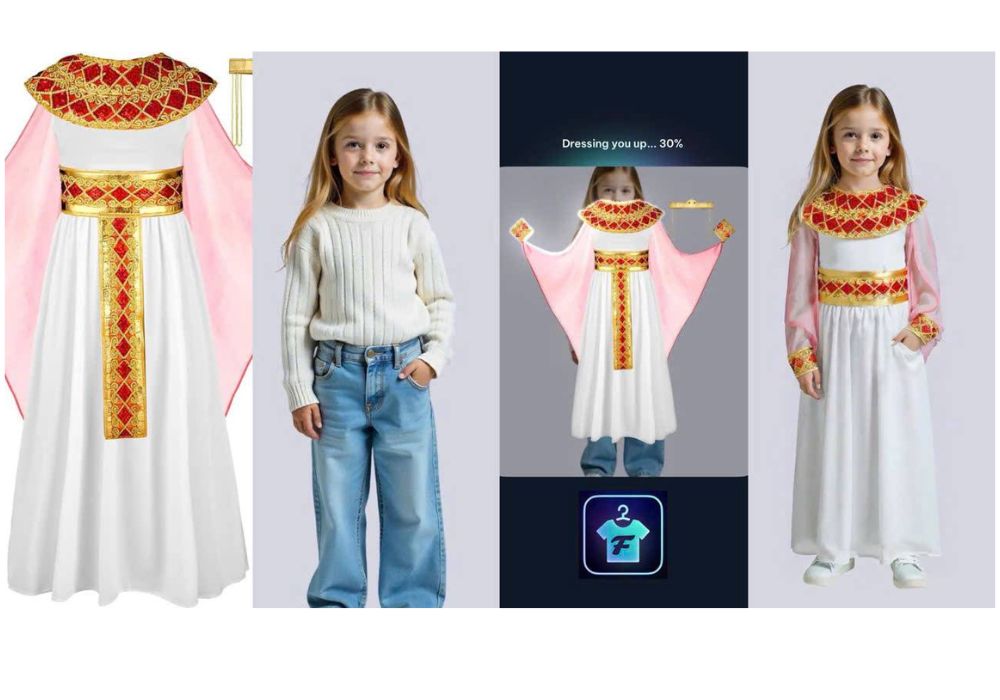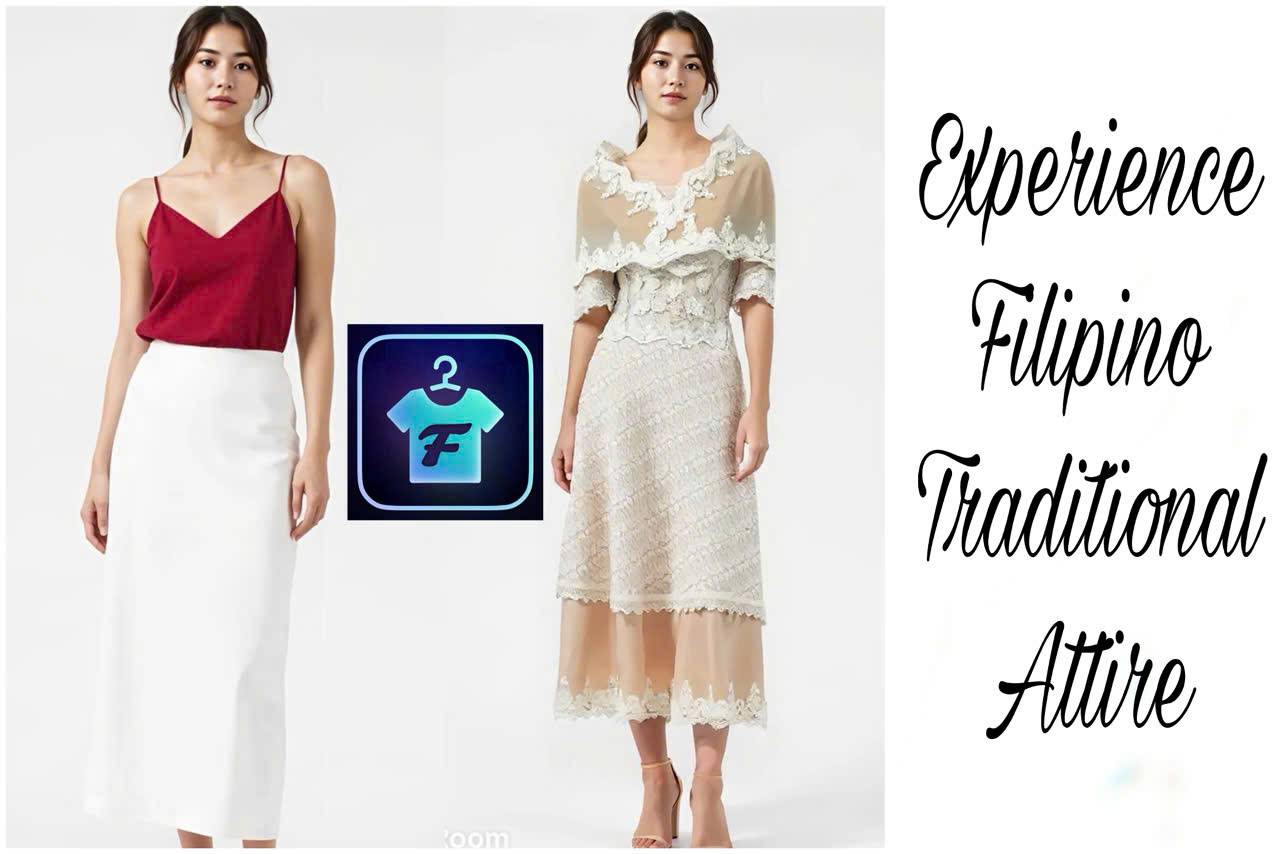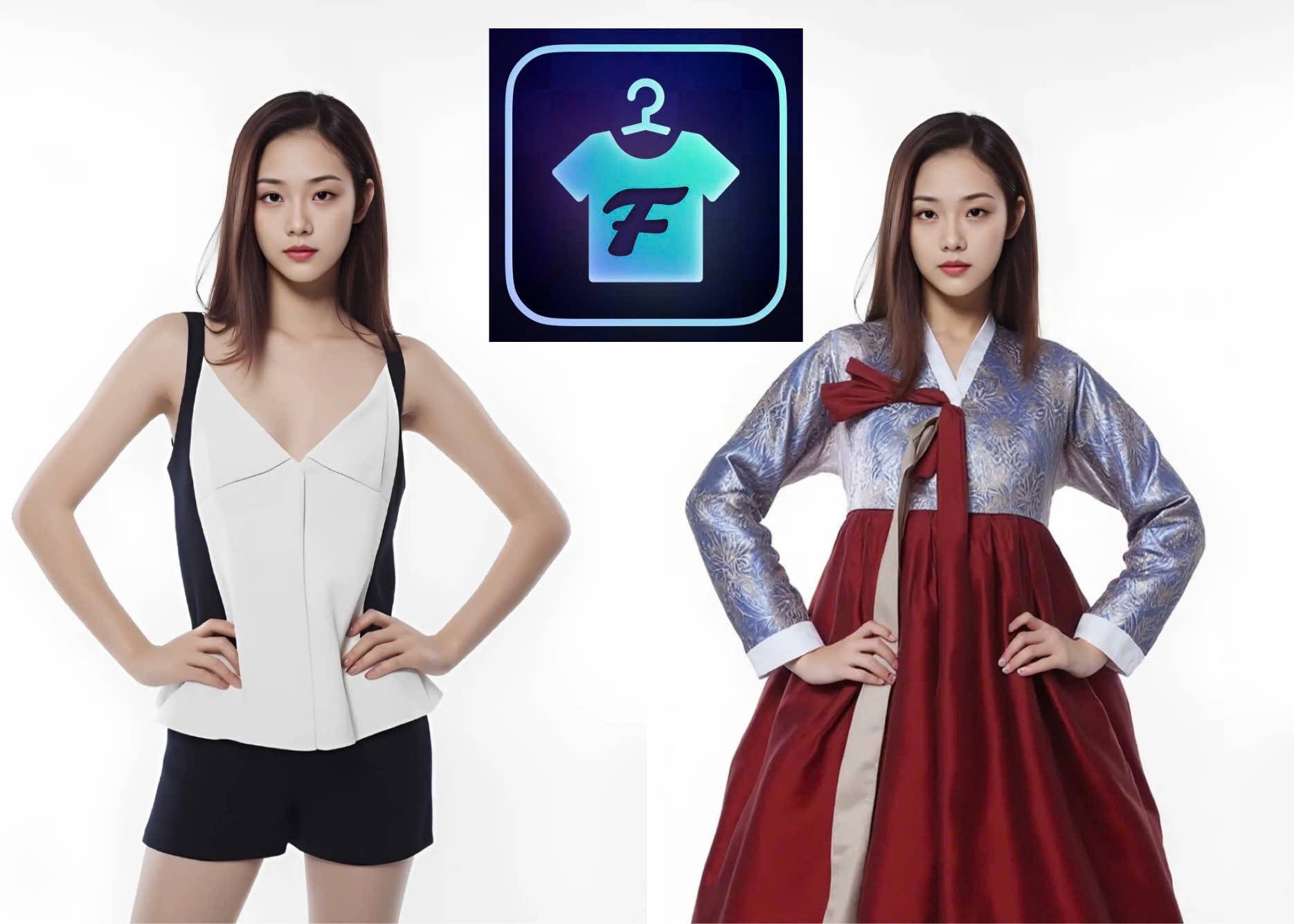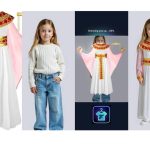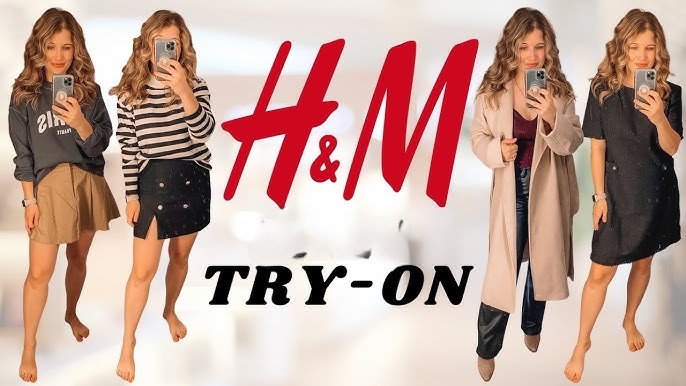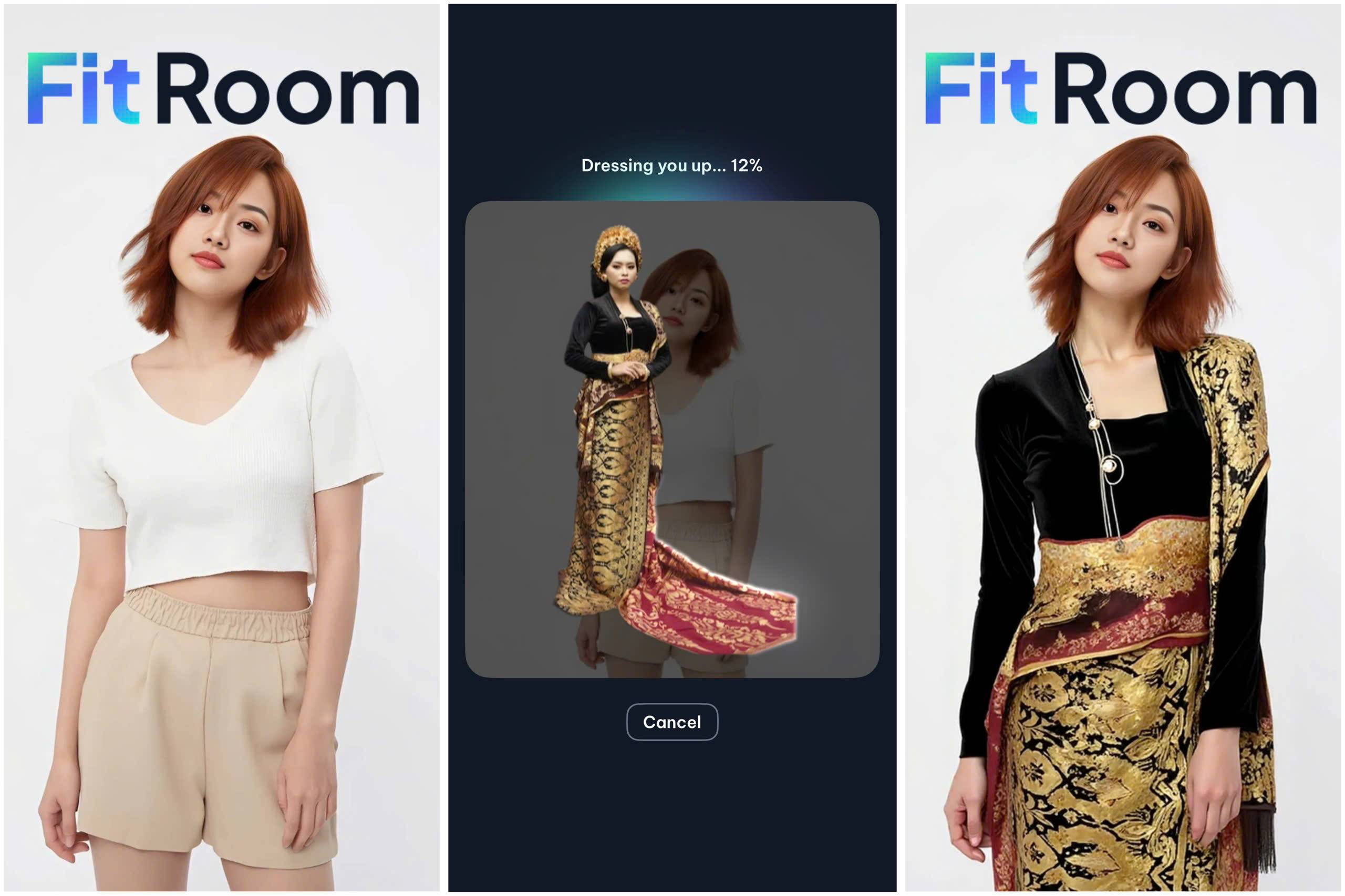There’s something truly magical about traditional Japanese clothing. From the flowing grace of a kimono to the relaxed charm of a yukata, they’re a reflection of Japan’s rich history, artistry, and cultural identity.
Thanks to FitRoom’s AI-powered virtual try-on technology, you can now see yourself in stunning Japanese attire with just a few clicks. Let’s dive into the world of timeless tradition and effortless style.
A walk through every type of traditional Japanese clothing
Japan’s traditional attire is incredibly diverse, with each garment designed for specific occasions, social classes, and even seasons. Whether it’s the graceful kimono, the light and breezy yukata, or the formal attire of samurai and scholars, each outfit carries a deep cultural significance.
- Kimono – The symbol of Japanese style
The kimono is the most recognized and refined piece of Japanese clothing. This T-shaped, wrap-around garment features long sleeves and is typically made from silk, cotton, or synthetic fabrics. It is worn with an obi, a wide belt tied at the back, and often layered with a nagajuban, an under-kimono that protects the fabric.
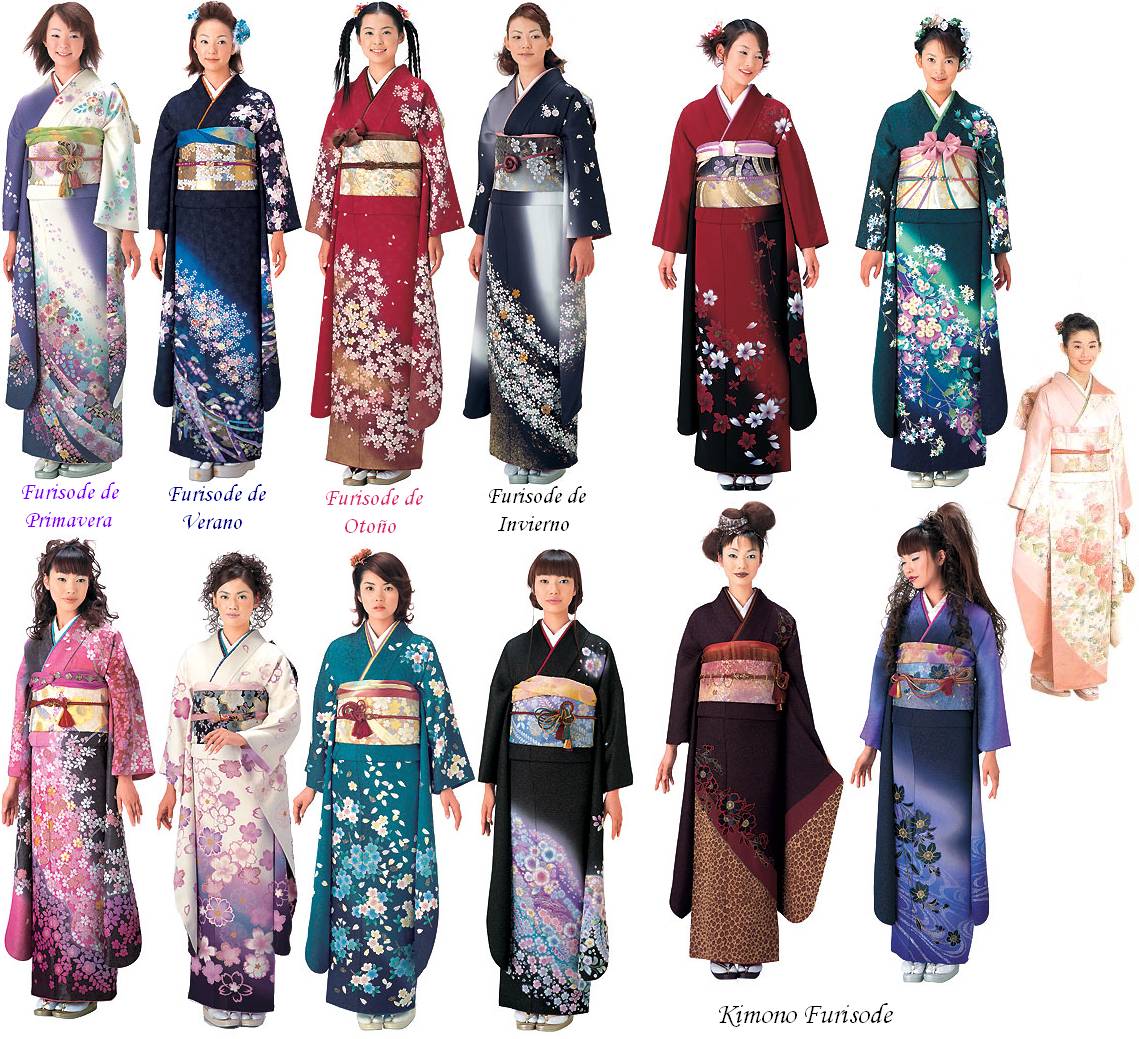
There are various types of kimono, each suited to different occasions. Furisode is a long-sleeved, colorful kimono worn by unmarried women at formal events, while tomesode features shorter sleeves and is typically worn by married women.
For casual wear, komon has small, repeated patterns, making it ideal for everyday use. Meanwhile, uchikake is a heavy, decorative kimono worn by brides in traditional weddings. The formality of a kimono is determined by its fabric, color, pattern, and family crests (kamon), making it an essential and symbolic piece in Japanese culture.
- Yukata – The lightweight summer kimono
A yukata is a more casual, unlined cotton kimono commonly worn in summer. It is popular at matsuri (festivals), fireworks show, and onsen (hot spring) resorts due to its lightweight and breathable design. Unlike the formal kimono, yukata is easier to wear, featuring a simple obi belt and requiring minimal layering.
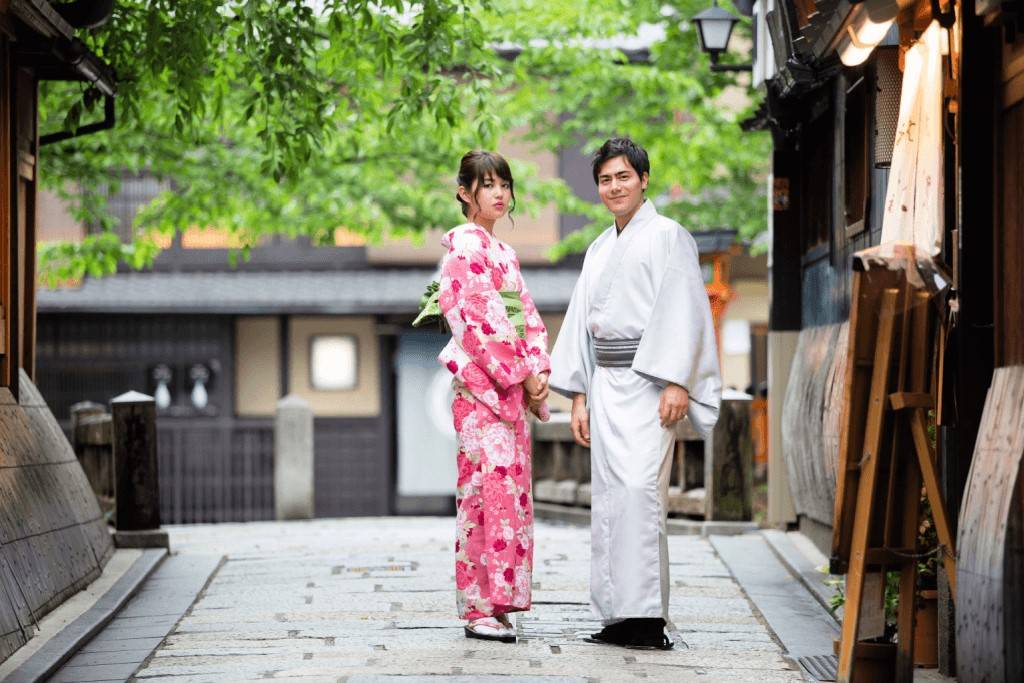
Both men and women wear yukata, with men’s designs being simpler and less elaborate. Many hotels and ryokan provide yukata for guests as comfortable loungewear, allowing them to experience this traditional attire in a relaxed setting.
- Hakama
The hakama is a pleated, skirt-like garment that ties around the waist, originally worn by samurai warriors. Today, it remains an important part of traditional Japanese attire, commonly seen in martial arts such as kendo, aikido, and kyūdō, as well as in Shinto priest ceremonies and graduation ceremonies, where women often wear a hakama over a kimono.
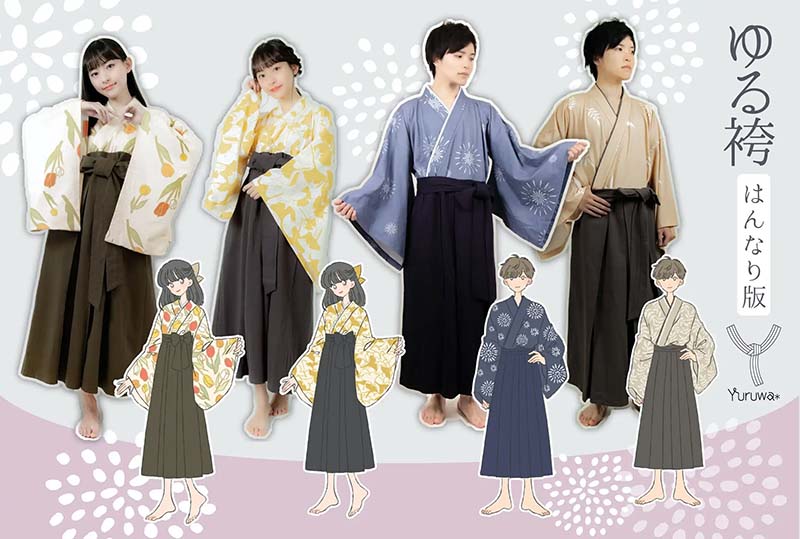
The hakama is a pleated, skirt-like garment tied around the waist
There are two main types: umanori, which is divided like trousers and was traditionally worn by samurai, and andon bakama, which is undivided and resembles a skirt. Samurai originally wore hakama to protect their legs while riding horses, and the design has since been adapted for modern ceremonial and practical uses.
- Shiromuku & Montsuki – The wedding attire
For traditional Japanese weddings, couples wear elaborate ceremonial attire that reflects elegance and symbolism. The Shiromuku is a white silk bridal kimono symbolizing purity, often worn with a Tsunokakushi, a traditional headpiece. Grooms typically wear montsuki, a black kimono adorned with family crests (Kamon), paired with a hakama for a formal look. In some weddings, brides change from the Shiromuku into an iro-uchikake, a colorful outer kimono, during the reception to signify the transition into married life.

- Jinbei & Samue – Everyday comfort wear
Some traditional Japanese clothing, such as Jinbei and Samue, are designed for comfort and practicality. Jinbei is a lightweight cotton set consisting of a top and shorts, often worn as summer pajamas or homewear.
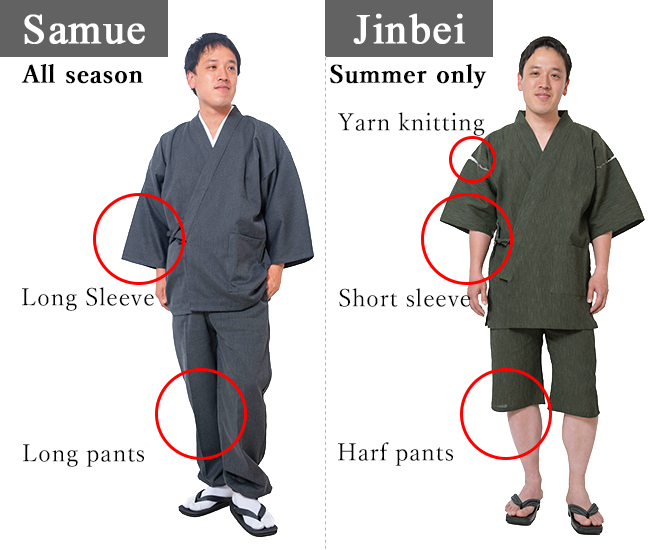
Samue, on the other hand, is traditionally worn by monks, artisans, and ryokan staff as work attire. It is loose-fitting, comfortable, and allows ease of movement, making it a popular choice even today among Buddhist monks for daily chores.
- Special occasion attire
Beyond everyday and ceremonial wear, Japan also has attire specific to special occasions, performances, and festivals.
Shōzoku refers to the robes worn by Shinto priests during rituals, while hōmongi is a type of kimono with elaborate patterns worn for formal visits. During matsuri (festivals), staff and participants often wear happi, a short coat with bold patterns and symbols representing their group or team.

In the world of traditional Japanese theater, including Nō and Kabuki, showcases highly decorative costumes designed to enhance the storytelling and visual spectacle of the performances.
Each of these garments carries a deep cultural significance, representing different aspects of Japanese history, tradition, and artistry. Whether it’s the timeless elegance of a kimono, the practicality of a hakama, or the comfort of a Jinbei, traditional Japanese clothing remains a living part of the nation’s rich heritage.
Also read:
1. What Is Thai Traditional Dress
2. What Is Indian Traditional Wear
3. Try On Traditional Vietnamese Clothes
Try on traditional Japanese clothing with FitRoom
Experiencing the beauty of traditional Japanese attire doesn’t have to involve a trip to Japan or an elaborate fitting session. With FitRoom, you can seamlessly try on different kimono, yukata, hakama, and more – all with just a few taps on your phone.
Whether you’re curious about how you’d look in a furisode kimono or want to see yourself in a samurai-style hakama, FitRoom brings Japan’s rich fashion heritage straight to your screen.
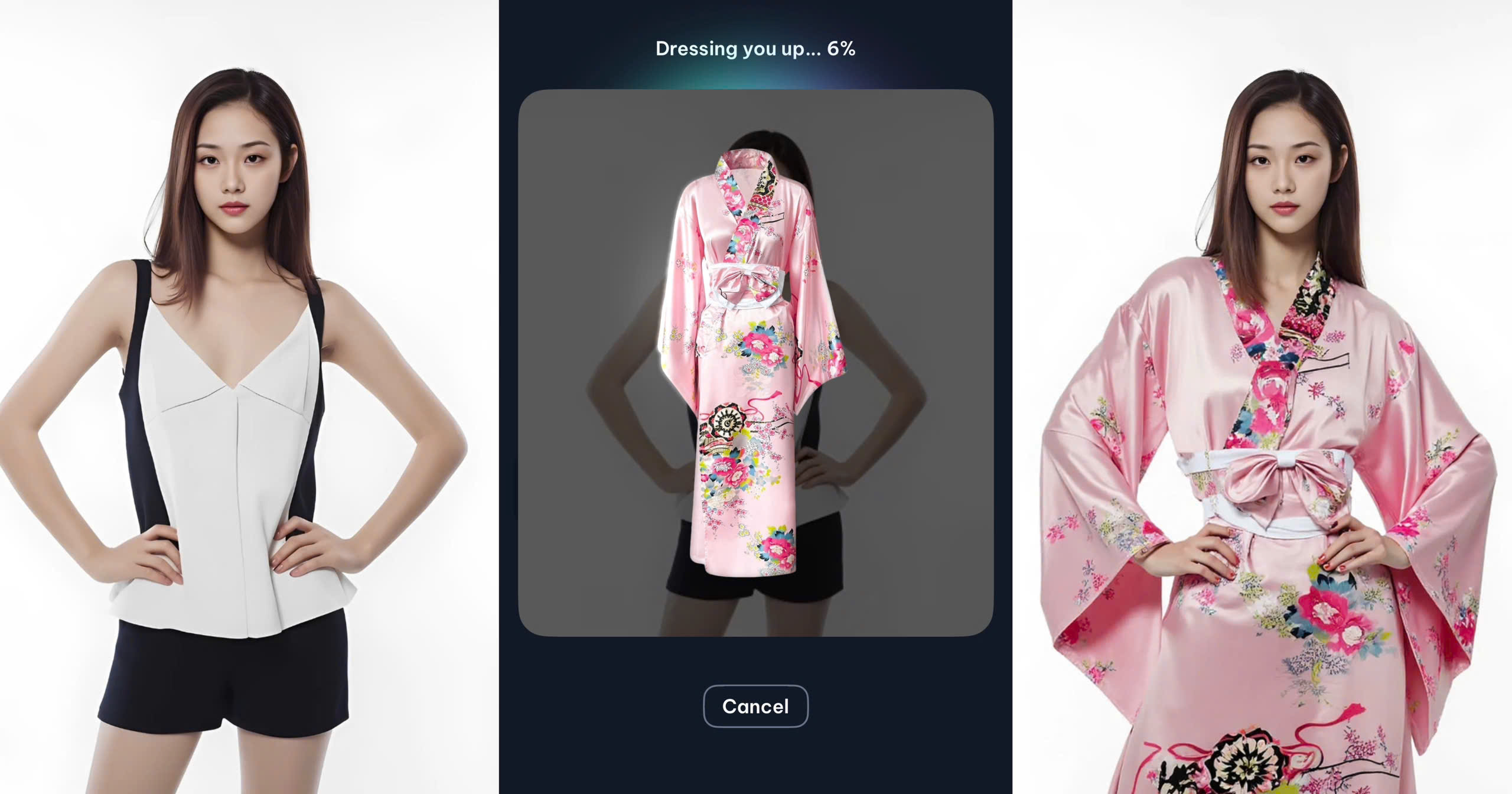
With advanced AI technology, FitRoom accurately applies traditional attire to your photo, ensuring a realistic and seamless transformation. You simply upload a photo of the outfit, and FitRoom’s AI will apply it to your image for a realistic preview with no need for hours of adjusting layers. FitRoom works on all types of portraits – men, women, and even kids.
There’s nothing cuter than kids in tiny kimonos. Whether it’s a mini yukata for summer festivals, a hakama for a special ceremony, or an adorable happi coat for a matsuri, FitRoom brings out the charm of Japanese fashion for little ones. Imagine the joy of seeing your child in a vibrant kimono, looking like they stepped straight out of a historical painting.
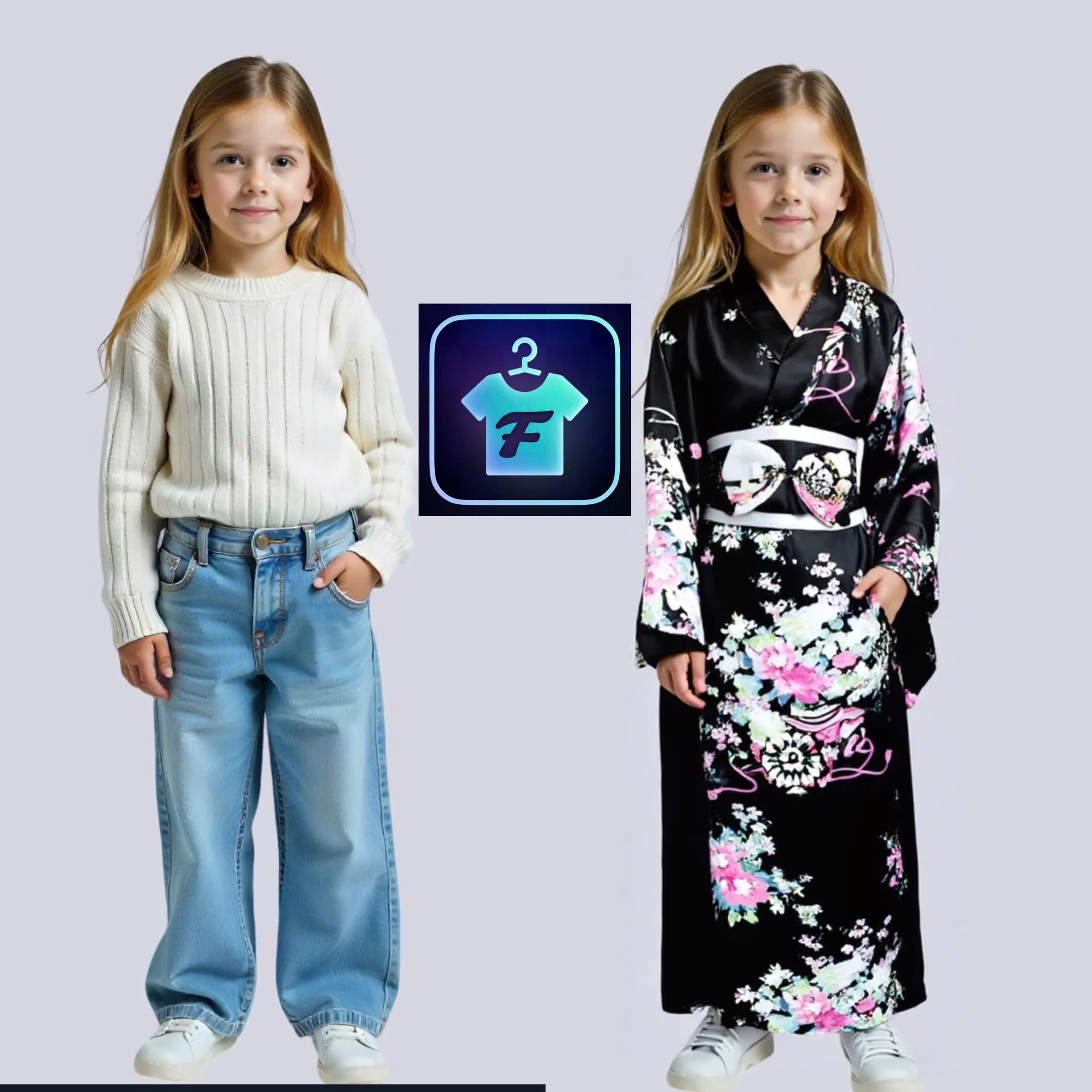
FitRoom is a cutting-edge AI-powered virtual try-on tool that lets you experience different fashion styles without the need for physical fitting rooms. Whether you’re looking to explore traditional Japanese clothing, check how an outfit suits you before purchasing, or just have fun trying new styles, FitRoom makes it effortless.
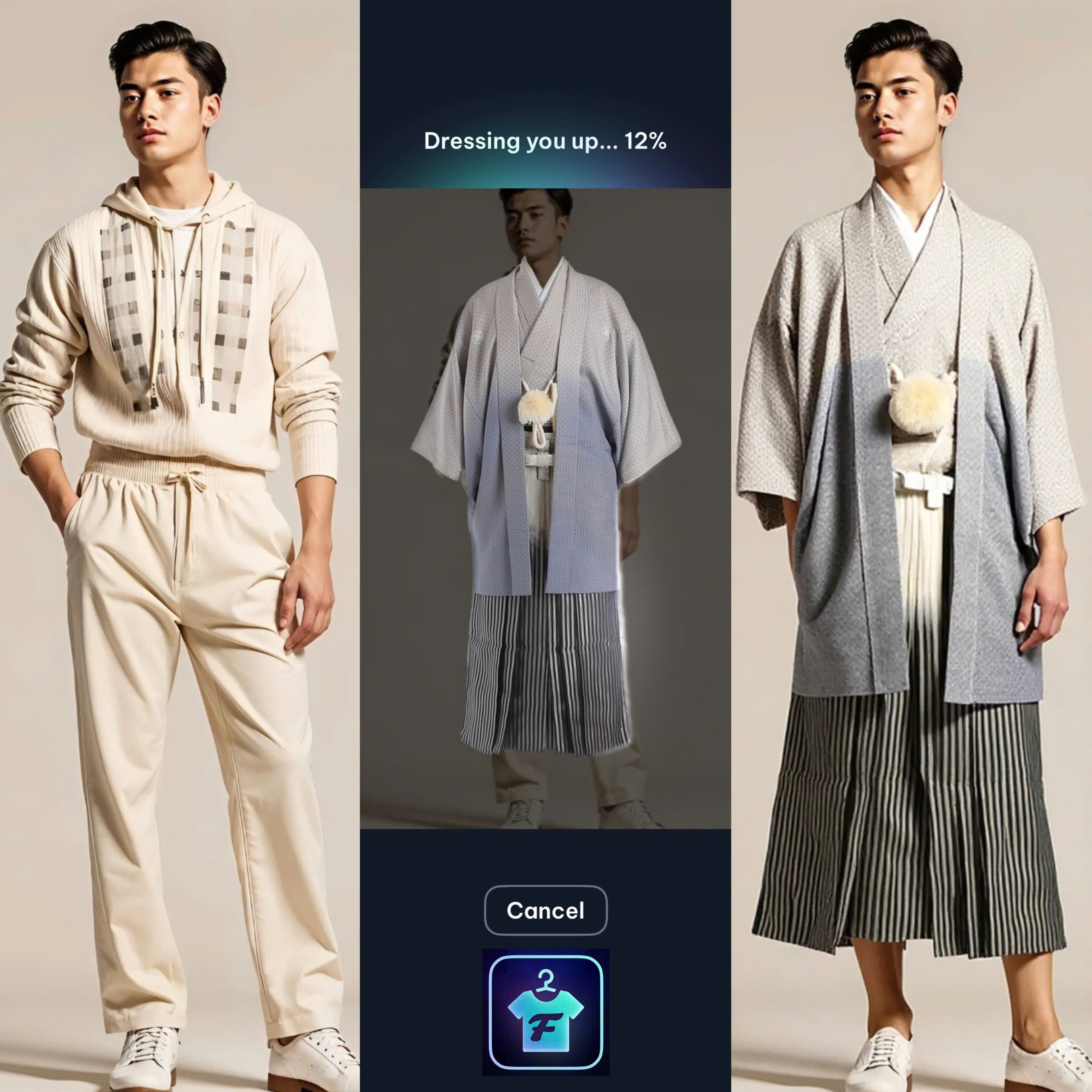
Whether you want to impress your friends, plan an outfit for a Japanese-themed event, or simply explore cultural fashion, FitRoom makes it easy to download and share your stunning virtual outfits.
Embrace the beauty of the Sakura country with FitRoom
Japan’s culture is a beautiful blend of history, artistry, and deep-rooted traditions. From the graceful drape of a kimono to the effortless charm of a yukata, every traditional outfit carries a story – of elegance, celebration, and the spirit of craftsmanship passed down through generations.
With FitRoom, you don’t need to travel to Kyoto or step into a tailor’s shop to enjoy the magic of traditional Japanese clothing. Whether you want to imagine yourself in a delicate wedding shiromuku, a bold samurai hakama, or even see how adorable your kids look in a tiny kimono, FitRoom brings the experience right to you, anytime, anywhere.
Immerse yourself in Japanese culture, celebrate its timeless beauty, and have fun exploring tradition in your own way.


